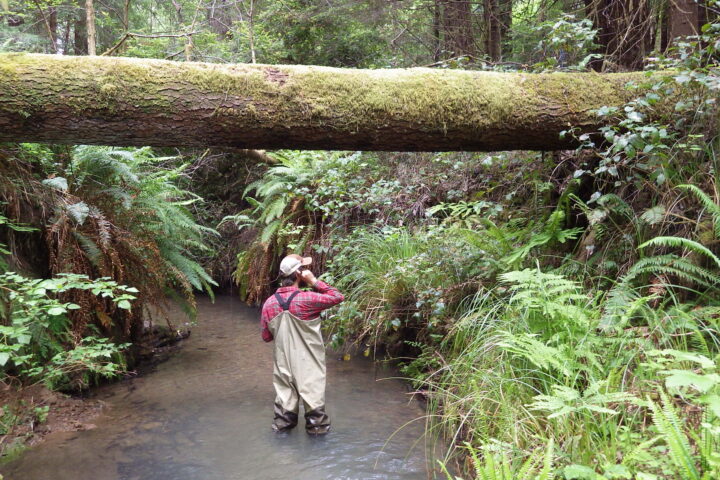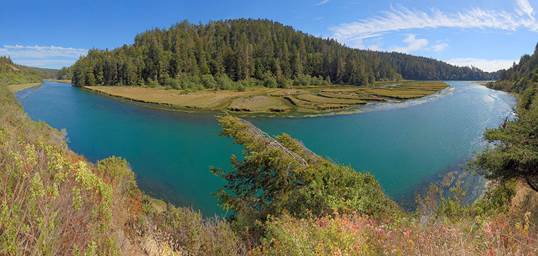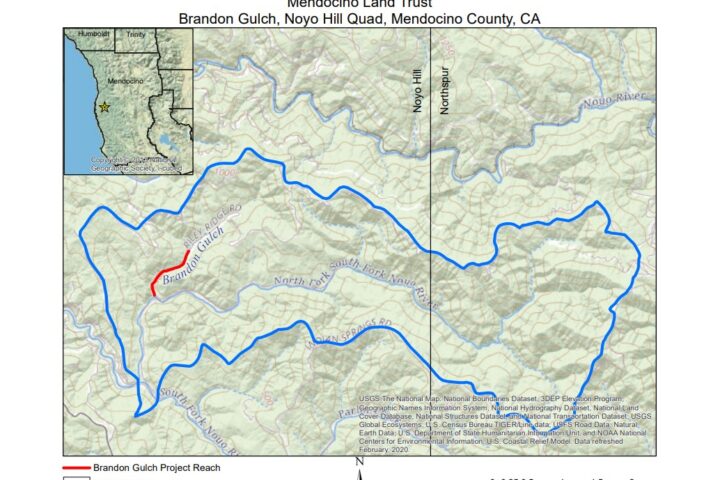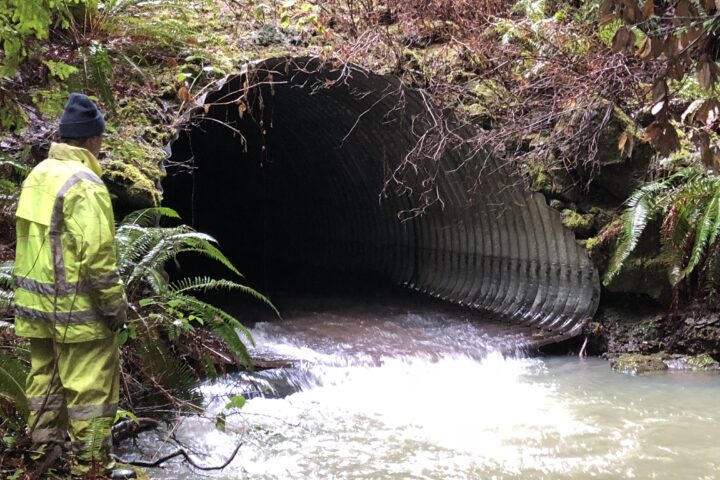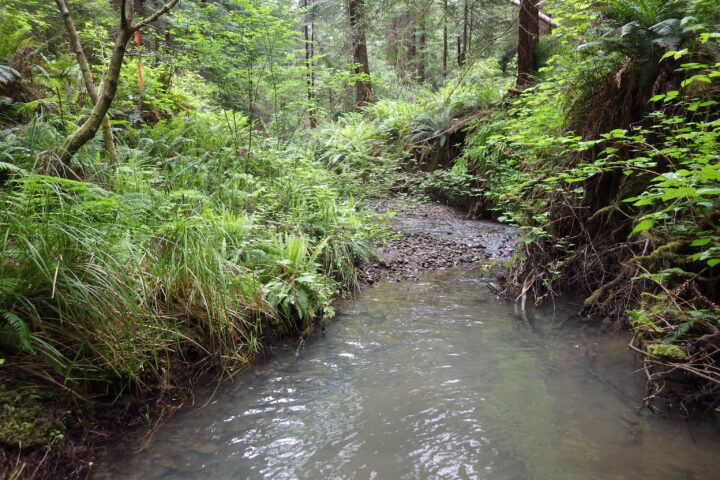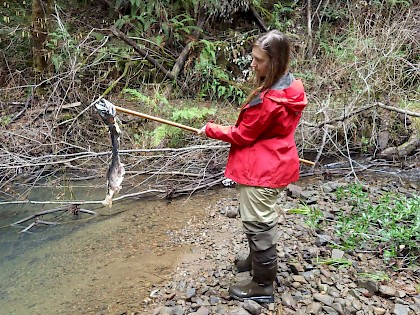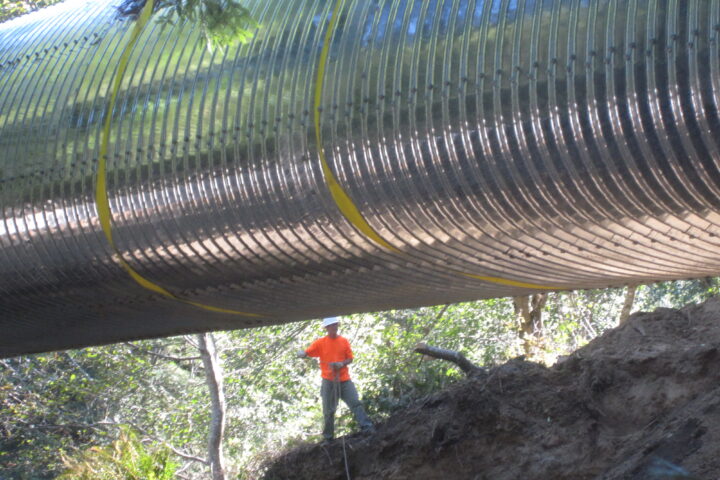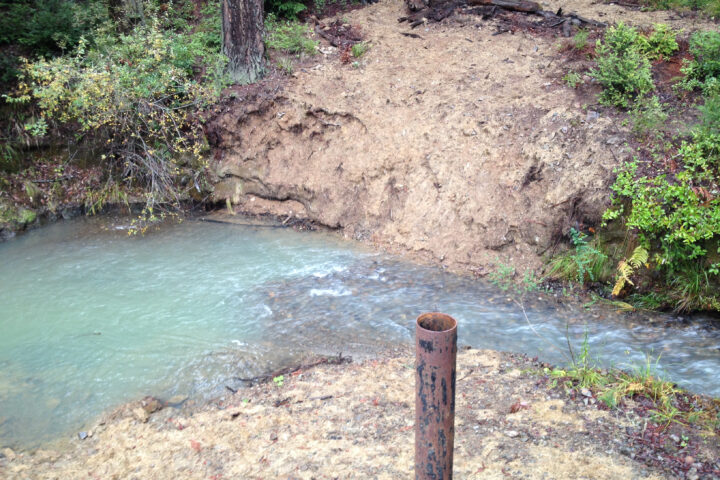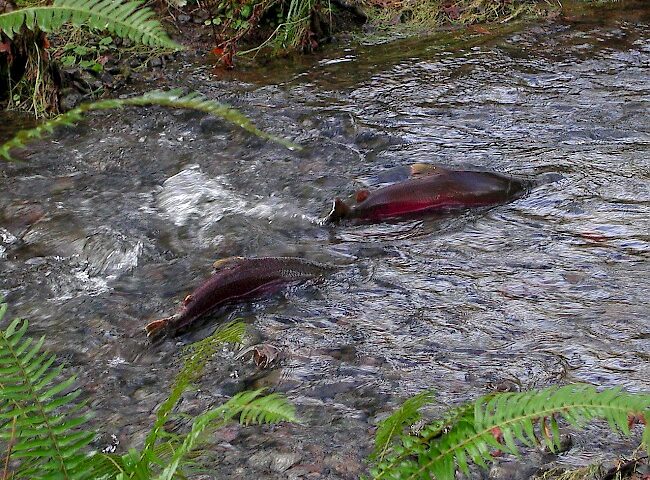Salmon Successes
Bear Gulch Habitat Enhancement
"Salmon are so emblematic of the Pacific Northwest and this part of California. Their significance transcends deep back into native…
Big River Estuary and Watershed
Mendocino Land Trust, with terrific community support, has protected hundreds of acres of coastal lands from logging or development and…
Brandon Gulch Salmon Habitat
Funding for this salmon habitat enhancement project in Brandon Gulch was granted in December 2021. Planning and permitting will take…
Chamberlain Creek Salmon Habitat
In 2021, the Mendocino Land Trust submitted a proposal to design a new crossing on Chamberlain Creek to replace a…
Hare Creek and Bunker Gulch Salmon Habitat Enhancement
In 2019, MLT's Director of Stewardship, Nicolet Houtz, coordinated salmon habitat restoration projects along Hare Creek and Bunker Gulch (a…
James Creek Fish Barrier Modification
In late 2018, Mendocino Land Trust completed a lengthy coho salmon habitat restoration project on James Creek, a tributary in the…
Nelson Gulch Culvert Replacement
The Nelson Gulch culvert replacement project was the last part of Big River Haul Road Salmon Restoration project that the Mendocino…
Parlin Creek Dam Removal
In 2014, at the request of Jackson Demonstration State Forest (JDSF), the Mendocino Land Trust contracted Pacific Watershed Associates to…
Trout Unlimited Project at MLT’s Noyo River Redwoods
This project was completed by the fantastic Trout Unlimited's North North Coast Coho Project in 2020. This massive undertaking to restore…
Filter
Salmon Recovery Projects
The Mendocino Land Trust is fortunate to have staff that have expertise in salmon restoration work. In spring 2021, MLT Conservation Manager Nicolet Houtz took the time to explain a few of the ways conservation leaders like her work to improve salmon habitat.
Woody Debris Projects:
Salmon need places to rest in the heavy river flows during winter migration and spawning. Newly hatched fry need places to hide from predators. That’s why we add large logs to creeks, creating complexity in the stream, slowing down the water so hiding places are created and providing cover from the sun.
When loggers clear-cut the forest a century ago, leftover debris piled up in massive log jams in many of our creeks. Well-meaning decision-makers in the 1950s called for clearing away all those obstructions so fish could move up and downstream more freely.
With no wood in the streambeds, however, the water in the streams moved too quickly and deep channels were cut, creating long “bowling alleys” of fast moving water. Fish had no place to hide or rest.
Now, the best practice calls for large logs to be placed back into the creek. Not in huge piles like the old days, but in strategic places. This wood will capture other wood and create areas where fish can rest, hide and grow large, so they can survive their outward migration and life in the ocean.
Mendocino Land Trust has been involved in these large wood projects over several summers and our measurements from before and after are showing that the pools for salmon are in fact becoming deeper, which is just what we intended to happen. We look forward to seeing more of these results as we take more measurements each summer in both the Big River and Noyo River Watersheds.
Road Decommissioning Projects
The Mendocino Land Trust has been involved in several road decommissioning projects to improve habitat for coho salmon. Nicolet Houtz, MLT’s director of stewardship explains that road decommissioning is important because “one of the largest causes of the declining health of water quality and salmon health is the increase of fine sediment in waterways.” Runoff from rains coming down roads picks up a lot of sediment that winds up in creeks. This can drastically reduce water quality. When fish pull sediment-laden water through their gills, it has serious health effects and greatly increases fish mortality.
Road decommissioning is done according to strict protocols, with barriers placed at the edge of the project area to ensure sediment does not enter creeks.
MLT staff and interns planted saplings in the cleared areas in some projects, thanks to funding from Sonoma Clean Power’s Evergreen Program. This practice accelerates the disturbed area’s return to forested habitat. As the trees grow, their roots hold sediment in place and keep it out of streams to ensure improved water quality.
Barrier Removal Projects
Stream crossing replacement projects are another way to improve salmon habitat. Culverts that channel the passage of water under our roads and railroad trestles are critical to our infrastructure – but they have to be done carefully and maintained. Culverts installed in the past were often undersized and became clogged with debris, blocking the passage of salmon. Many culverts were installed with too big of a drop on the downstream side. This becomes a major impediment when salmon are headed upstream to spawn. The Mendocino Land Trust has coordinated culvert replacement projects along tributaries to Big River. Trout Unlimited completed a large project along the Noyo River in 2020 which included replacing two culverts in MLT’s Noyo River Redwoods preserve.
The Land Trust has also been involved in small dam removal projects. In the past, dams were often installed to ensure a consistent water source for people or cattle. In most cases, however, dams also limit salmon migration. Several years ago, the Mendocino Land Trust did a project to remo Several years ago, the Mendocino Land Trust oversaw removal of the Parlin Creek dam in the Noyo River watershed.
 OPEN IN GOOGLE MAPS
OPEN IN GOOGLE MAPS